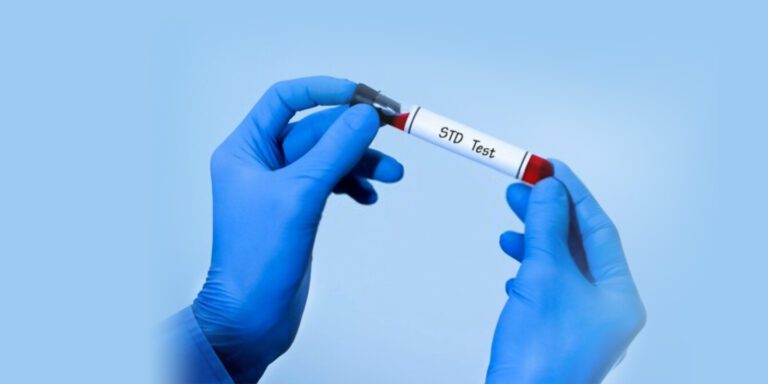Can You Get HIV from a Toilet Seat
In the realm of HIV transmission, myths and misconceptions often abound, leading to unnecessary fears and anxieties. One common question that arises is whether it’s possible to contract HIV from a toilet seat. In this comprehensive article, we will delve deep into this topic, dispelling myths, providing accurate information, and exploring the science behind HIV transmission. By the end of this article, you will have a clear understanding of the real risks associated with using public toilets and the importance of seeking guidance and information from an HIV clinic regarding HIV transmission concerns.
Understanding HIV Transmission
Before we address the specific question of HIV transmission through a toilet seat, it’s crucial to have a solid grasp of how HIV is typically transmitted. HIV, or Human Immunodeficiency Virus, is primarily transmitted through the following routes:
1. Unprotected Sexual Intercourse
The most common mode of HIV transmission is through unprotected sexual intercourse, which includes vaginal, anal, and oral sex. HIV can be present in the semen, vaginal fluids, rectal fluids, and blood of an infected person and can enter the bloodstream of an uninfected person through mucous membranes or open sores.
2. Sharing Needles and Syringes
HIV can be transmitted when people share needles or syringes, particularly in the context of drug use. Contaminated needles can introduce the virus directly into the bloodstream.
3. Mother-to-Child Transmission
HIV can be passed from an infected mother to her child during delivery, nursing, or pregnancy. The risk of transmission from mother to child, however, may be considerably lowered with proper healthcare and antiretroviral therapy.
4. Blood Transfusions and Organ Transplants
In the past, HIV transmission through blood transfusions and organ transplants was a concern. However, rigorous screening processes and testing have made such transmissions extremely rare in developed countries.
5. Occupational Exposure
Healthcare workers and first responders may be at risk of HIV transmission if they experience needlestick injuries or come into contact with infected blood or bodily fluids while providing care.
HIV Transmission and Toilet Seats: The Science
Now that we have a solid understanding of how HIV is typically transmitted, let’s address the question of whether you can get HIV from a toilet seat. To put it simply: No, you cannot contract HIV from a toilet seat.
Public restrooms are often the subject of HIV transmission myths, particularly when it comes to toilet seats. The idea that you can contract HIV from a toilet seat persists despite overwhelming scientific evidence to the contrary. The reasons behind this are grounded in scientific facts:
Addressing Specific Concerns: Period Blood and HIV Transmission
Can You Get HIV from Period Blood on a Toilet Seat?
A common concern that arises is whether HIV can be transmitted through period blood on a toilet seat. While it is understandable to worry about potential risks, the science behind HIV transmission provides clarity.
HIV in Menstrual Blood: Menstrual blood, like other bodily fluids such as blood, semen, and vaginal secretions, can contain HIV if the person is infected. However, the circumstances under which HIV could be transmitted through period blood on a toilet seat are extremely limited. HIV does not survive well outside the human body, and once exposed to air, it quickly loses its ability to infect. The virus becomes inactive and unable to transmit the infection to another person.
Environmental Exposure and HIV Viability: When menstrual blood comes into contact with a toilet seat, it is exposed to air and environmental conditions that are hostile to the virus. HIV does not thrive in such environments, and its potential for survival and transmission rapidly diminishes. For someone to contract HIV from period blood on a toilet seat, the virus would need to be active, and there would need to be direct contact with an open wound or mucous membrane. This scenario is highly improbable, making the risk of HIV transmission in this context virtually nonexistent.
Can You Get HIV from Urine on a Toilet Seat?
Another frequently asked question is “Can You Get HIV from Urine on a Toilet Seat. This concern is rooted in the misconception that all bodily fluids carry a high risk of HIV transmission.
HIV Presence in Urine: HIV is not present in urine. The virus is primarily found in specific bodily fluids like blood, semen, vaginal fluids, rectal fluids, and breast milk. Urine does not contain the virus, even if the person is HIV-positive. Therefore, the risk of contracting HIV from urine on a toilet seat is nonexistent.
Understanding Bodily Fluid Risks: The key to understanding HIV transmission lies in recognizing that not all bodily fluids are equal in their potential to carry the virus. HIV requires specific conditions to be transmitted, and urine simply does not meet these criteria. As a result, any concerns about contracting HIV from urine on a toilet seat are unfounded and based on misinformation.
1. HIV Is Fragile Outside the Body
HIV is a delicate virus that cannot survive for long outside the human body. Once exposed to air, temperature variations, and the environment, HIV quickly becomes inactive and loses its ability to infect. This means that even if an HIV-positive person had used the same toilet seat before you, the virus would not remain viable on the seat’s surface.
2. HIV Requires Direct Access to the Bloodstream
For HIV transmission to occur, the virus must come into direct contact with the bloodstream of an uninfected person. This typically happens through activities like unprotected sex or sharing needles. Merely touching a surface contaminated with HIV, such as a toilet seat, does not provide the virus with a direct route to the bloodstream.
3. HIV in Bodily Fluids
HIV is primarily present in certain bodily fluids, such as blood, semen, vaginal fluids, rectal fluids, and breast milk. It is not present in urine or feces, which are the primary substances found on a toilet seat.
4. Environmental Exposure
Toilet seats are not conducive environments for HIV transmission. Even if there were traces of infected bodily fluids on a seat (which would be highly unlikely), the virus would not survive for long outside the body, as mentioned earlier. HIV requires a specific set of conditions to remain viable and infectious.
Addressing Common Concerns
While the scientific evidence overwhelmingly supports the fact that you cannot get HIV from a toilet seat, it’s essential to address some common concerns and misconceptions that often arise:
1. Open Wounds or Cuts
Some individuals worry that if they have open wounds or cuts on their thighs or buttocks, these wounds might come into contact with the toilet seat and potentially lead to transmission. However, even in such scenarios, the risk of transmission remains negligible. HIV requires direct access to the bloodstream, and superficial cuts or wounds are unlikely to provide such access.
2. Cleaning Practices
Public restrooms are usually cleaned and sanitized regularly. Any bodily fluids that might have come into contact with a toilet seat would likely be cleaned and disinfected long before the next person uses the restroom.
3. Toilet Seat Covers
Many public restrooms offer toilet seat covers for added hygiene. While these covers can provide a psychological sense of protection, they are typically designed to prevent direct skin contact rather than protect against HIV transmission. Nevertheless, using seat covers is a personal preference and can offer peace of mind to some individuals.
Real HIV Transmission Concerns
While the risk of getting HIV from a toilet seat is virtually nonexistent, it’s important to focus on genuine concerns and effective prevention methods. These include:
1. Safe Sex
Engaging in safe sexual practices, such as using condoms consistently and correctly, is an essential way to prevent HIV transmission through sexual intercourse.
2. Needle Safety
If you inject drugs, it is crucial to avoid sharing needles and syringes with others. Access to clean, sterile injection equipment can help reduce the risk of HIV transmission.
3. HIV Testing
Regular HIV testing is vital for individuals who engage in high-risk behaviors or have concerns about their HIV status. Early detection and appropriate medical care can make a significant difference in managing HIV.
4. Pre-Exposure Prophylaxis (PrEP)
Pre-exposure prophylaxis (PrEP) is provided for those who are at high risk of HIV transmission, such as those who have HIV-positive partners or engage in unsafe sexual activities. PrEP involves taking a daily medication that can minimize the risk of HIV infection.
5. Post-exposure prophylaxis (PEP)
Seek medical assistance right away if you feel you have been exposed to HIV through unprotected intercourse or other ways. Post-exposure prophylaxis (PEP) is a short-term treatment that can lower the risk of infection if started within 72 hours after possible exposure.
Proactive Steps: Staying Informed and Safe
Preventing HIV: Focus on Proven Methods
While myths about contracting HIV from toilet seats may persist, it is vital to focus on proven methods of prevention to reduce the risk of HIV transmission.
Engage in Safe Sexual Practices: Using condoms consistently and correctly during sexual intercourse is one of the most effective ways to prevent the spread of HIV.
Avoid Sharing Needles: For those who use injectable drugs, it is crucial to use clean, sterile needles and never share them with others.
Regular HIV Diagnosis: Routine HIV testing is essential for those at risk. Early detection allows for timely treatment, which can significantly reduce the chances of transmission.
Consider PrEP and PEP: Pre-exposure prophylaxis (PrEP) and post-exposure prophylaxis (PEP) are medical treatments that can prevent HIV infection in high-risk individuals or those who may have been recently exposed.
The Role of Education in Combating HIV Transmission Myths
Spreading Accurate Information
Education plays a critical role in dispelling myths and misconceptions about HIV transmission, including those related to toilet seats.
Community Outreach: Programs aimed at educating the public about how HIV is and isn’t transmitted can help reduce stigma and fear. By providing accurate information, these initiatives empower individuals to make informed decisions about their health.
School-Based Education: Incorporating HIV education into school curricula ensures that young people receive accurate information early on, helping to prevent the spread of misinformation and reduce the stigma associated with HIV.
Moving Forward: Reducing Stigma and Fear
Addressing Stigma Surrounding HIV
The fear and stigma surrounding HIV often stem from misunderstandings about how the virus is transmitted. Addressing these fears head-on is crucial to creating a more informed and compassionate society.
Open Dialogue: Encouraging open discussions about HIV and its transmission can help dispel myths and reduce the fear associated with the virus.
Support for HIV-Positive Individuals: Providing support and resources for those living with HIV is essential in reducing stigma and promoting understanding within the community.
Conclusion
The idea that you can get HIV from a toilet seat is a misconception not grounded in scientific reality. HIV is a fragile virus that cannot survive outside the human body for extended periods. The virus requires direct access to the bloodstream, and toilet seats do not provide such access.
While concerns about HIV transmission through toilet seats are unfounded, it’s essential to focus on proven prevention methods and accurate information. Engaging in safe sex, avoiding needle sharing, regular HIV testing, and awareness of pre-exposure and post-exposure prophylaxis are all key components of effectively preventing HIV transmission, and seeking guidance and information from a reputable HIV clinic can be invaluable in addressing any concerns or questions related to HIV.
At Hope Across The Globe, we advocate for spreading accurate information about HIV to combat the stigma and fear associated with the virus. By dispelling myths and understanding the science behind HIV transmission, we can work towards a world where HIV is better understood and effectively managed.






